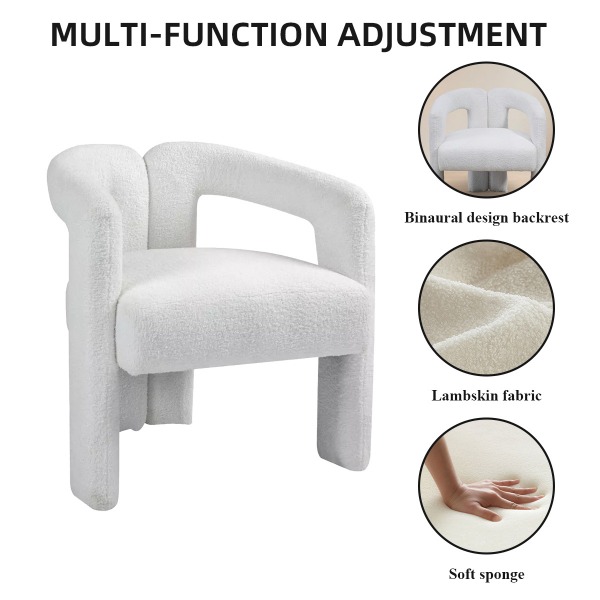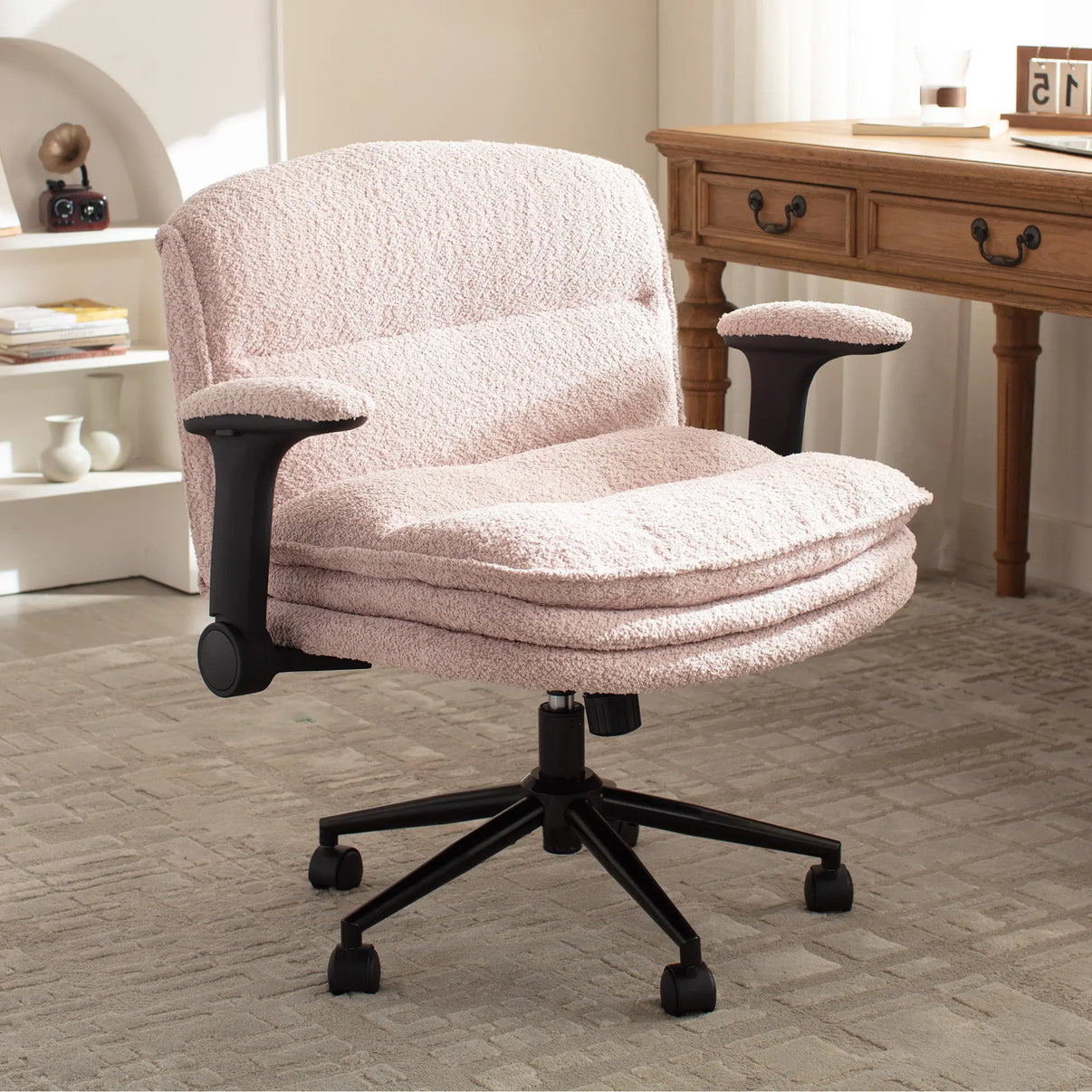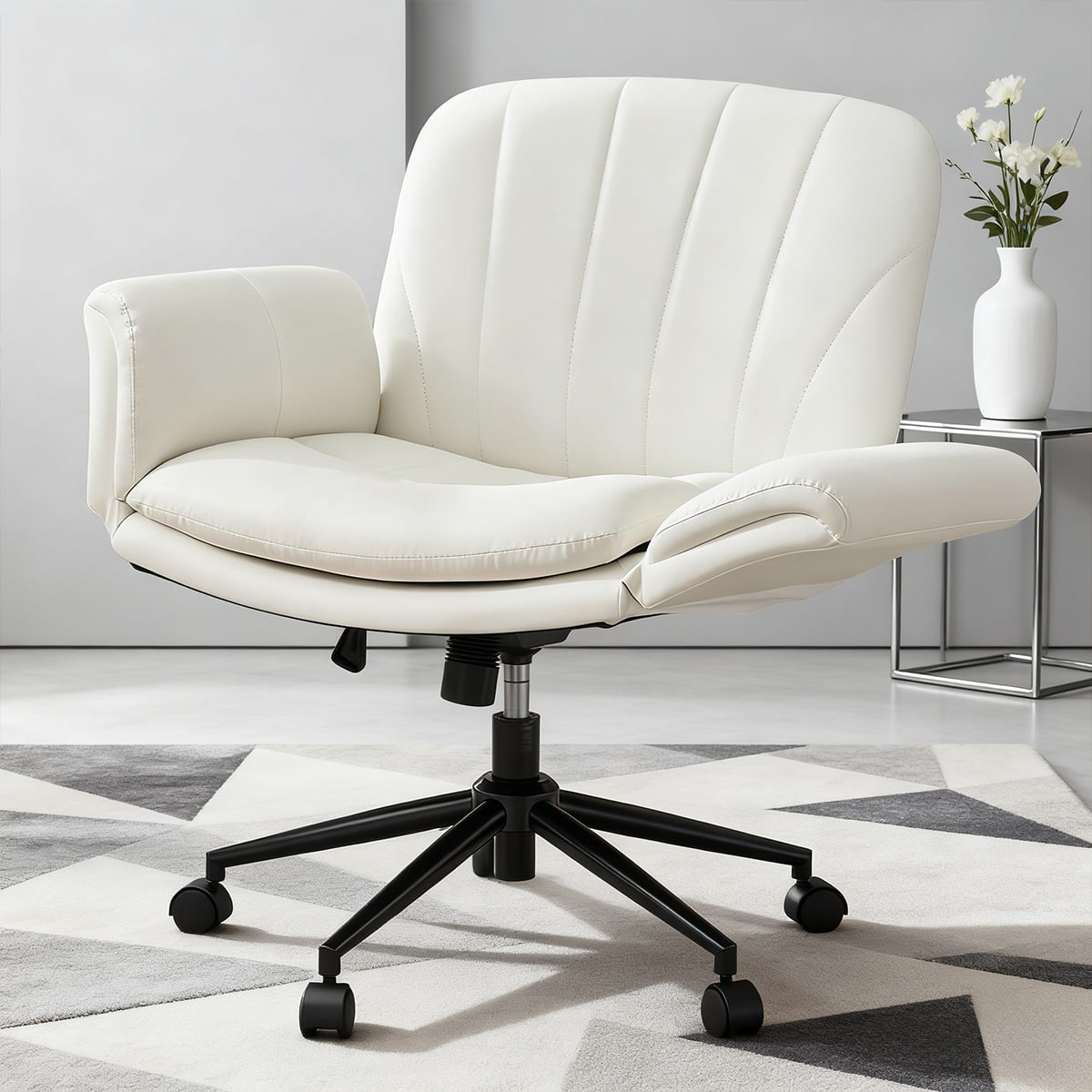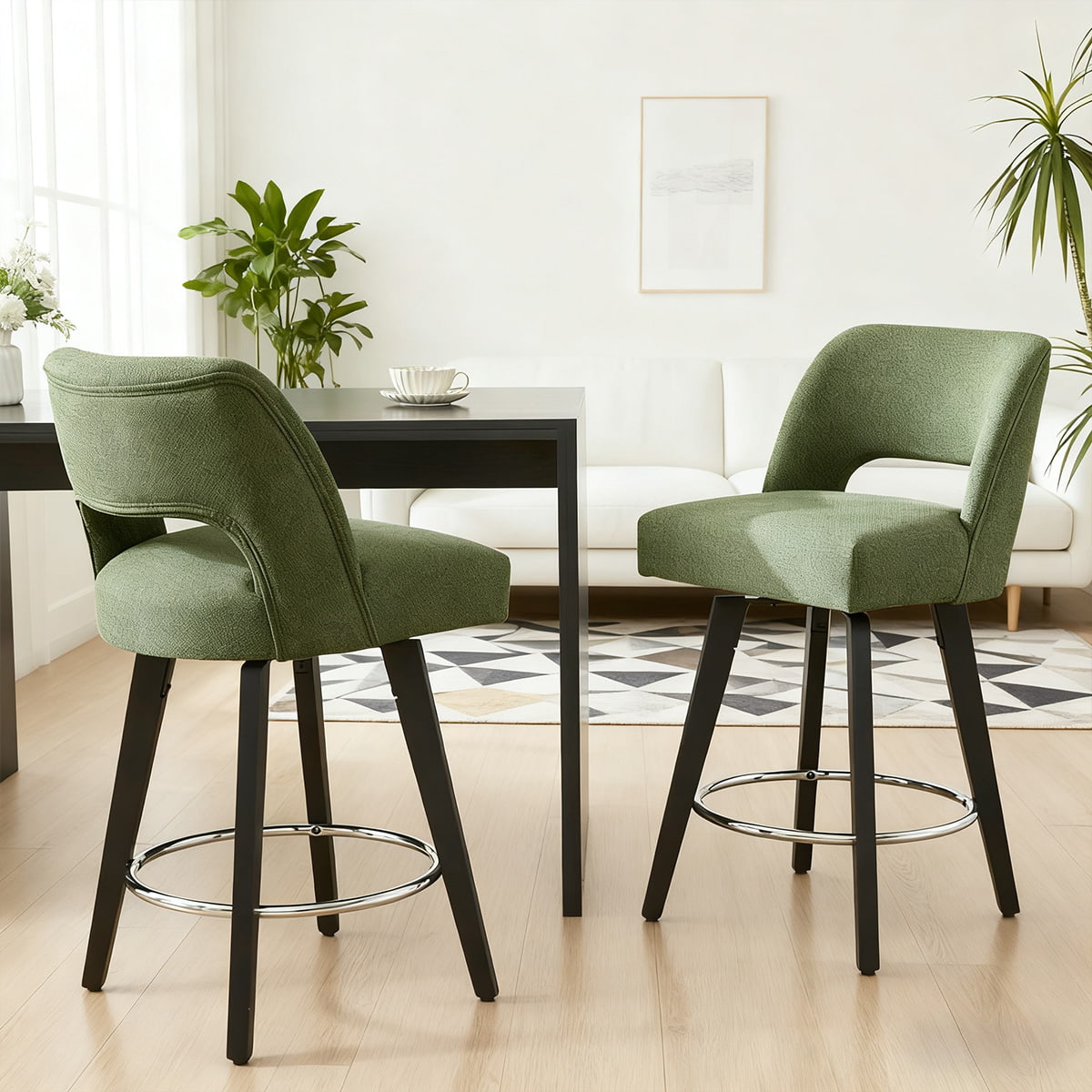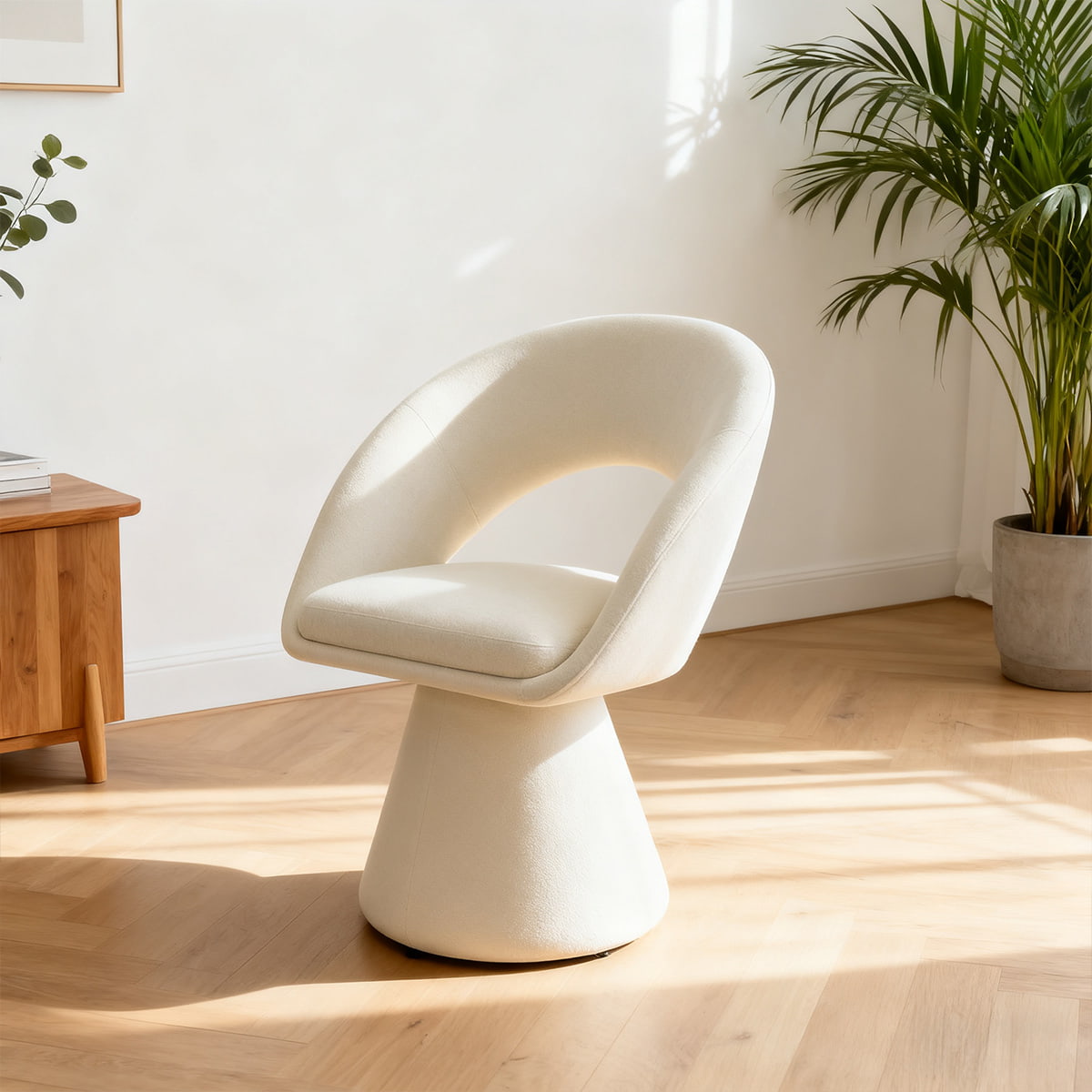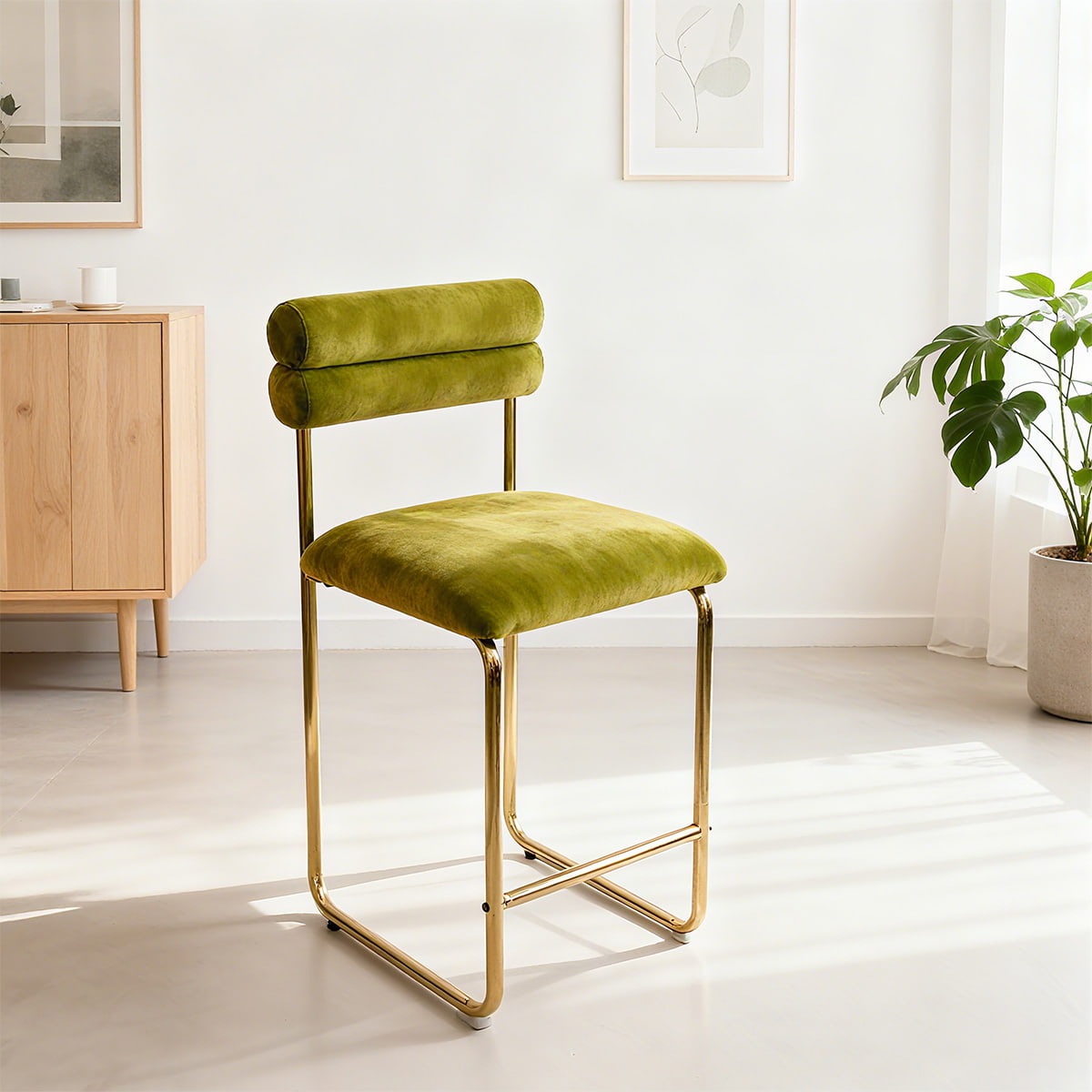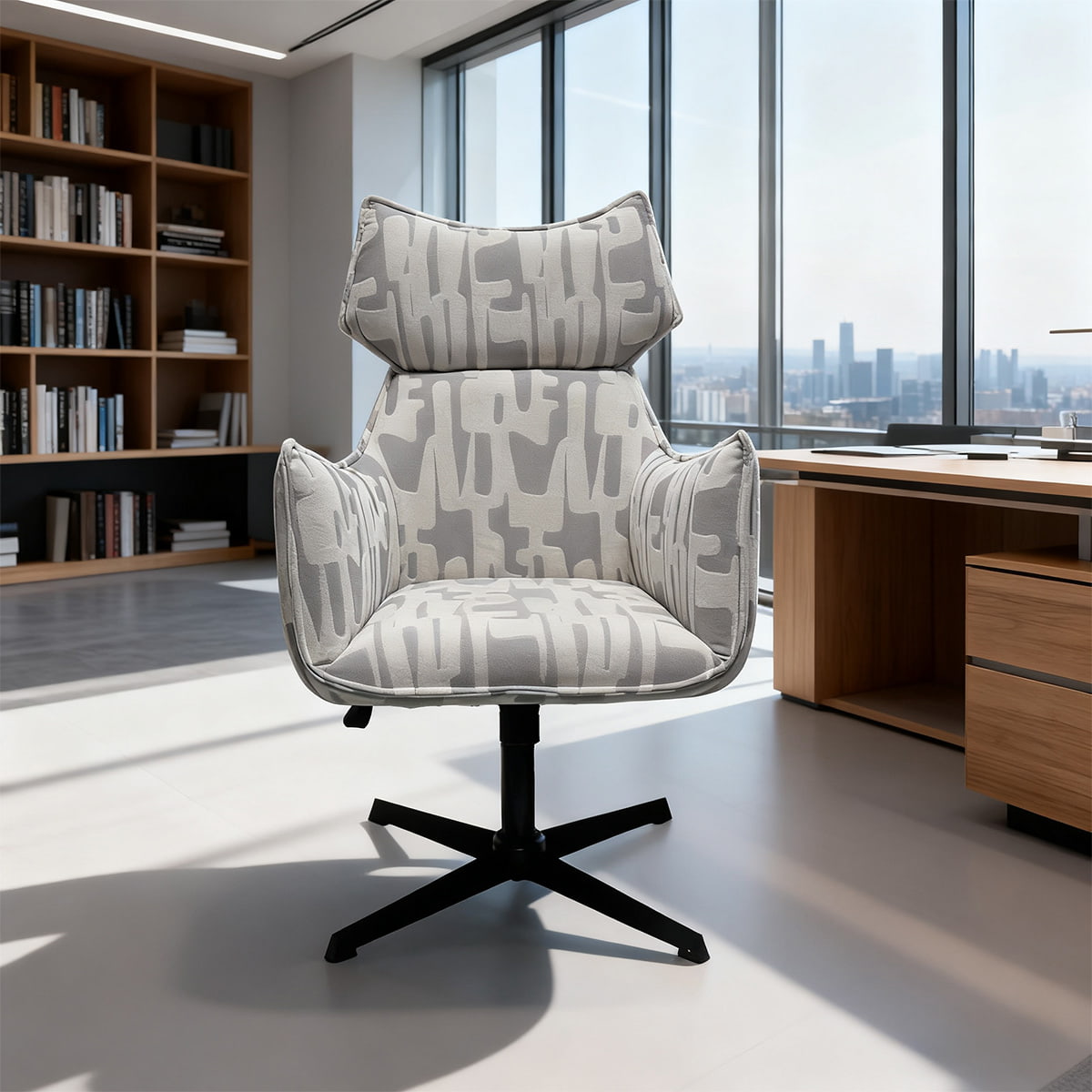
2025's Top Fabric Living Room Leisure Chairs: Comfort Meets Style in Modern Home Design
Posted by Admin | 10 Jul
Why Fabric Leisure Chairs Are Dominating Modern Living Rooms This Year
The resurgence of fabric living room leisure chairs in contemporary home decor reflects a growing consumer preference for furniture that combines exceptional comfort with aesthetic versatility, as these pieces effortlessly bridge the gap between functional seating and stylish design elements that elevate entire living spaces. Unlike their leather counterparts that often feel cold and formal or plastic alternatives that lack sophistication, fabric chairs provide a welcoming warmth and tactile softness that invites relaxation while offering nearly limitless options for color coordination and texture mixing within existing decor schemes.
Thickened Cushions Pilling-Resistant Minimalist Shearling Accent Chair
1. The Growing Popularity of Sustainable and Eco-Friendly Fabric Options
Environmentally conscious consumers are increasingly seeking out chairs crafted from sustainable materials such as organic cotton, hemp blends, or recycled polyester fabrics that minimize ecological impact without compromising on durability or visual appeal. These eco-friendly alternatives not only reduce the carbon footprint associated with furniture production but actually outperform traditional materials in several key aspects, as organic cotton fabric chairs demonstrate approximately 30% better breathability during warm seasons while maintaining superior heat retention in cooler months compared to synthetic blends. The market has responded enthusiastically to these sustainable options, with manufacturers reporting a 45% increase in demand for chairs using Global Organic Textile Standard (GOTS) certified fabrics over the past two years alone.
2. Ergonomic Innovations in Modern Lounge Chair Designs
Contemporary comfortable fabric lounge chairs for small spaces incorporate cutting-edge ergonomic features that transform ordinary seating into therapeutic experiences, with advanced designs now including adjustable lumbar support systems, customizable reclining mechanisms, and strategically placed cushioning that properly aligns the spine during extended periods of use. When comparing traditional chairs to these ergonomic marvels, the differences become strikingly apparent in both comfort levels and long-term health benefits:
| Feature | Traditional Chair | Ergonomic Fabric Chair |
|---|---|---|
| Lumbar Support | Typically absent or poorly contoured | Adjustable with multiple height and firmness settings |
| Seat Depth | Fixed dimensions that may not suit all body types | Customizable depth with sliding seat mechanisms |
| Armrest Positioning | Static placement that may cause shoulder strain | Height-adjustable with pivot functionality |
Comprehensive Guide to Selecting the Ideal Fabric Leisure Chair
Choosing the perfect fabric leisure chair requires careful consideration of numerous factors ranging from material properties to spatial requirements, as the ideal chair should not only complement your existing decor but also address specific lifestyle needs and physical comfort requirements that vary significantly among individuals.
3. Evaluating Fabric Types for Durability, Maintenance and Aesthetic Impact
The market offers an overwhelming array of stylish fabric accent chairs for modern homes featuring materials that range from practical performance fabrics to luxurious natural textiles, each with distinct advantages that make them suitable for different household situations and design preferences. Microfiber stands out as an exceptionally durable option that resists stains and fading while maintaining its plush texture through years of heavy use, making it particularly ideal for households with children or pets that require furniture capable of withstanding frequent cleaning. Velvet upholstery delivers undeniable sophistication and depth of color that elevates any living space, though its higher maintenance requirements and tendency to show wear patterns mean it's better suited for formal seating areas rather than everyday family use. For those seeking a middle ground, linen-blend fabrics offer excellent breathability and a casually elegant texture that works well in both contemporary and traditional settings, though they may require more frequent professional cleaning to maintain their appearance over time.
4. Space Optimization Strategies for Urban Dwellers
Modern space-saving fabric recliners for apartments incorporate ingenious design solutions that maximize functionality in limited square footage, such as innovative swivel bases that eliminate dead space in corners, foldable armrests that convert wide chairs into space-efficient seating when not in use, and modular designs that allow multiple furniture pieces to nest together when additional floor space becomes necessary. The dimensional efficiency of these space-conscious designs becomes particularly apparent when comparing them to traditional recliners, as a well-designed 360-degree swivel chair can provide the same comfort level while occupying approximately 20% less floor space than conventional stationary models, and wall-hugger mechanisms in modern recliners reduce the required clearance from walls by nearly half compared to older designs. For exceptionally compact living situations, some manufacturers now offer chairs with built-in storage compartments beneath the seat or within the armrests, providing discreet spaces to store blankets, books, or other living room essentials without requiring additional furniture pieces that would further clutter the area.
Emerging Trends in Fabric Leisure Chair Design for 2024
This year's most innovative fabric leisure chair designs reflect broader shifts in consumer preferences toward personalized comfort, multifunctional furniture, and bold aesthetic statements that serve as focal points in room designs rather than merely blending into the background.
5. The Resurgence of Bold Patterns Alongside Earthy Neutrals
The current market for affordable fabric armchairs with ottomans reveals an interesting dichotomy in color and pattern preferences, with both vibrant geometric prints and soothing natural tones enjoying simultaneous popularity among different demographic groups. Younger buyers particularly gravitate toward chairs featuring bold tropical patterns or abstract designs that make dramatic visual statements, often using these pieces as anchors for eclectic decor schemes that mix multiple styles and periods. Meanwhile, more traditional consumers continue to favor chairs upholstered in earthy neutrals like warm taupes, soft greiges, and muted greens that create calming, harmonious environments and provide flexible foundations for evolving color schemes. Manufacturers have responded to this divide by offering many models in multiple fabric options, allowing buyers to select either conservative or adventurous upholstery for the same frame design, with some even providing removable/reversible covers that enable owners to change their chair's appearance as tastes evolve over time.
6. The Rise of Modular and Adaptive Furniture Systems
Forward-thinking designers are reimagining fabric leisure chairs as components within larger, adaptable furniture systems rather than standalone pieces, creating chairs that can transform into daybeds, connect with matching ottomans to form sectional seating, or even incorporate adjustable backrests that modify their silhouette to suit different activities from upright reading to full reclining positions. This modular approach particularly resonates with urban millennials and empty nesters who value furniture that can adapt to changing needs without requiring complete replacements, as evidenced by recent market research showing that 65% of buyers aged 25-40 now prioritize multifunctional pieces over single-purpose furniture. The most innovative systems even allow users to purchase additional components over time, enabling a single chair to evolve into an entire seating group as space and needs permit, with all pieces maintaining cohesive design lines and matching upholstery for a unified aesthetic despite their functional versatility.
7. Technological Integration in Comfort Furniture
The latest generation of high-end fabric leisure chairs now incorporates surprising technological enhancements that elevate the user experience far beyond traditional seating options, including built-in heating elements for cold climates, subtle massage functions for therapeutic relaxation, and even integrated sound systems with hidden speakers that create personal audio zones without disturbing others in the room. These technological integrations maintain discreet profiles that preserve the chairs' aesthetic appeal, with controls typically hidden in armrest compartments or accessible through smartphone apps rather than cluttering the furniture's clean lines with visible buttons or switches. While these features currently appear primarily in premium models, industry analysts predict the technology will trickle down to mid-range products within the next three to five years as manufacturing costs decrease and consumer demand for smart furniture continues its steady upward trajectory.
Related Products
-
 NO.8, NO.1 Road, Sunshine Industrial Park 2, Anji County, Huzhou City, Zhejiang Province, China.
NO.8, NO.1 Road, Sunshine Industrial Park 2, Anji County, Huzhou City, Zhejiang Province, China.
-
 [email protected]
[email protected]
[email protected]
[email protected]
[email protected] -
 +86-13567991394
+86-13567991394


 En
En English
English Français
Français Español
Español